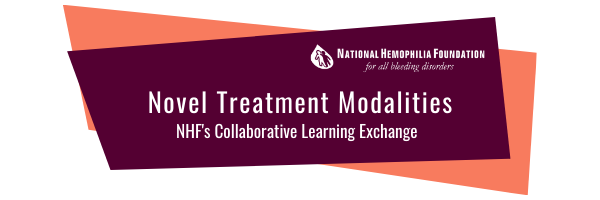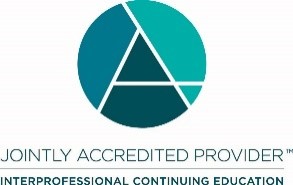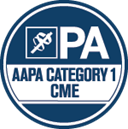
NHF’s Fourth Collaborative Learning Exchange will be on -
Navigating Reimbursement for Patients on Non-Factor Therapy
This live virtual workshop will provide prescribers with an opportunity for interactive discussion on the challenges providers face when trying to get reimbursement for patients switching to emicizumab or using additional products in conjunction with emicizumab for surgical procedures. Participants will be asked to apply their own decision-making skills in considering a case study example.
This activity will be held live on Tuesday, July 12 , 2022, from 1:00-2:00 pm EDT
12:00-1:00 pm CDT/ 11:00 am-12:00 pm MDT/ 10:00 -11:00 am PDT
Target Audience:
These activities are intended for hematologists, physician assistants, and nurse practitioners who regularly prescribe therapies for individuals living with hemophilia A and B.
The event will be moderated by:
Brigette Reid
Director of Payer Relations
National Hemophilia Foundation
The event presenter is:
Kollet Koulianos, MBA
Vice President of Payer Relations
National Hemophilia Foundation
The event format will include:
- Latest information on challenges demonstrated in reimbursement for patients living with hemophilia A, with and without inhibitors, who are trying to switch to emicizumab or using additional products in conjunction with emicizumab for surgical procedures.
- Breakout rooms to discuss and review a case study
- Group returning together to summarize findings
- Discussion of lessons learned
Learning Objectives:
- Discuss the importance of tighter treatment management for hemophilia specific to coverage of novel therapies such as non-factor replacement treatments while considering cost-effectiveness
- Outline the appropriate documentation for reimbursement of non-factor therapies for hemophilia A patients, with or without inhibitors, including resources that can be used to support an appeal if coverage is denied
- Collaborate within the healthcare team for shared patient-centered and population-focused problem-solving for those experiencing bleeding disorders as derived from case-based treatment strategies and evidence-based practice
Following the event, a resource document will be shared to support the learning provided by the activity along with a list of supplemental resources.
ACCREDITED CONTINUING EDUCATION
 In support of improving patient care, this activity has been planned and implemented by University of Nebraska Medical Center and National Hemophilia Foundation. University of Nebraska Medical Center is jointly accredited by the Accreditation Council for Continuing Medical Education (ACCME), the Accreditation Council for Pharmacy Education (ACPE), and the American Nurses Credentialing Center (ANCC), to provide continuing education for the healthcare team.
In support of improving patient care, this activity has been planned and implemented by University of Nebraska Medical Center and National Hemophilia Foundation. University of Nebraska Medical Center is jointly accredited by the Accreditation Council for Continuing Medical Education (ACCME), the Accreditation Council for Pharmacy Education (ACPE), and the American Nurses Credentialing Center (ANCC), to provide continuing education for the healthcare team.
PHYSICIANS
The University of Nebraska Medical Center designates this live activity for a maximum of 1.0 AMA PRA Category 1 Credit™. Physicians should claim only the credit commensurate with the extent of their participation in the activity.
NURSE PRACTITIONERS
The University of Nebraska Medical Center designates this activity for 1.0 ANCC contact hour. Nurses should only claim credit for the actual time spent participating in the activity.
PHYSICIAN ASSISTANTS
 University of Nebraska Medical Center has been authorized by the American Academy of PAs (AAPA) to award AAPA Category 1 CME credit for activities planned in accordance with AAPA CME Criteria. This activity is designated for 1.0 AAPA Category 1 CME credits. PAs should only claim credit commensurate with the extent of their participation.
University of Nebraska Medical Center has been authorized by the American Academy of PAs (AAPA) to award AAPA Category 1 CME credit for activities planned in accordance with AAPA CME Criteria. This activity is designated for 1.0 AAPA Category 1 CME credits. PAs should only claim credit commensurate with the extent of their participation.
These trainings are supported by a Cooperative Agreement [Number NU01DD000006], funded by the Centers for Disease Control and Prevention. Its contents are solely the responsibility of the authors and do not necessarily represent the official views of the Centers for Disease Control and Prevention or the Department of Health and Human Services.

